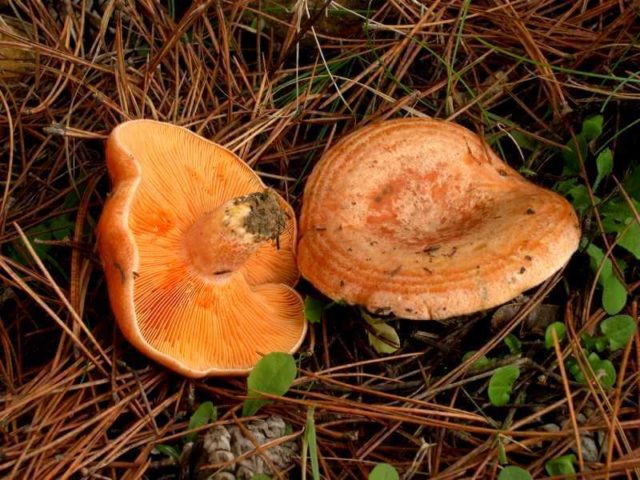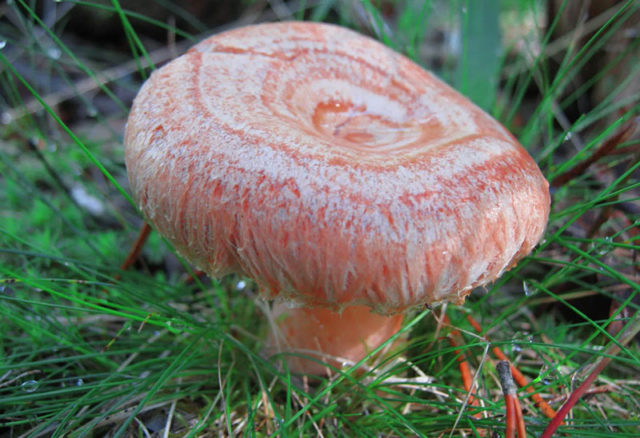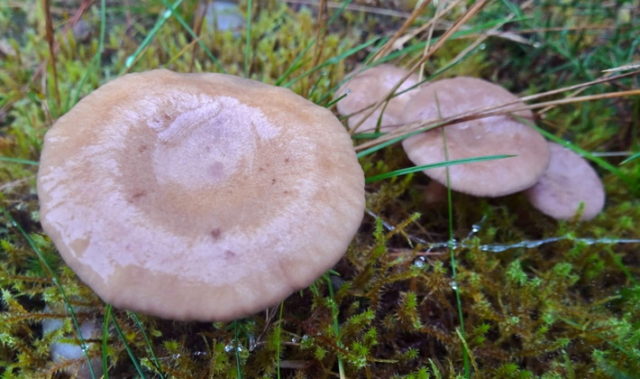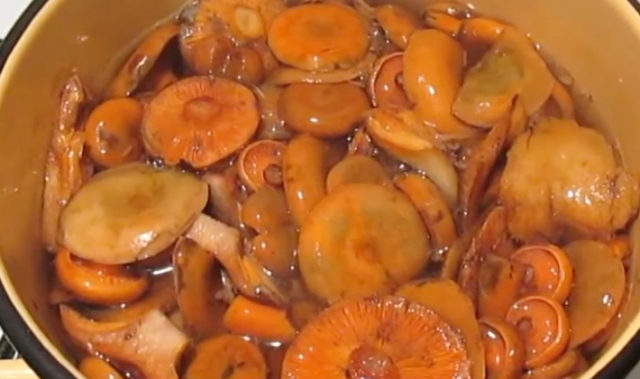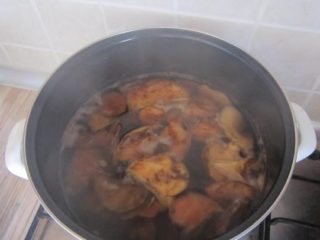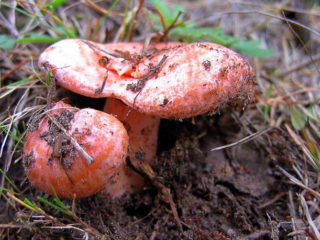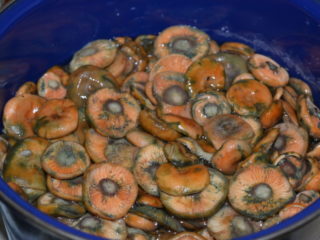Content
Gingerbread is real - a very tasty edible mushroom, widespread in Russia. To evaluate the beneficial qualities of a fungus, you need to familiarize yourself with its characteristics and find out how it looks.
Where pine mushrooms grow
You can meet a real camelina mainly in coniferous forests, but sometimes fungi are found in mixed forest plantations, the main thing is that pines grow nearby. Typically, the fruiting bodies of true saffron milk caps appear in forest clearings and edges, in clearings, and are geographically found in the Urals, Siberia, in the northern regions of the middle zone.
Alone, real mushrooms practically do not grow, usually in one place you can find a whole group of mushrooms. However, the search is greatly complicated by coloring - the fungi merge with pine bark and fallen needles, and mushroom pickers have to look very carefully at their feet.
What real mushrooms look like
Pine, or real camelina, is a low fungus that rises an average of 5-7 cm above the ground. In the photo of a pine mushroom, it can be seen that his hat at a young age is flat and slightly convex, but later becomes wider, up to 15 cm in diameter, and takes the shape of a funnel. There are light stripes on the edges of the cap, and the edges themselves in young fungi are slightly wrapped inward. The bottom surface of the hat is covered with orange plates.
As you can see in the photo of a real saffron milk cap, its leg is cylindrical in shape and hollow from the inside. Both the cap and the stem have the same orange-red tint, but if you touch the stem of the mushroom, it will quickly turn green. Under the influence of air, the flesh, orange at the break, and the reddish milky juice, which releases the broken camelina, acquire a green tint under the influence of air. This mushroom has a pleasant fruity smell, emanating from a fresh fungus.
Is it possible to eat pine mushrooms
Pine camelina mushrooms are classified as edible fungi of the 1st category. This means that it is not just possible to eat them, they are very tasty and bring significant benefits to the body. It should be noted that processing for real fungi is minimal - they can not even be soaked, but immediately salted, fry or boiled.
Mushroom taste
In their taste, real mushrooms are inferior only to porcini mushrooms, therefore they are considered a delicacy product. Fresh fungi have a bitter tinge in the taste, but after processing it becomes soft and pleasant.
Most often, a real orange mushroom is salted and pickled, it can also be fried.The mushrooms are not suitable for drying, but in salted and pickled form they retain a dense structure and bright color, do not break or crumble. The beauty of cooked real saffron milk caps is another reason for their high popularity.
Benefits and harm to the body
Eating real mushrooms is not only tasty, but also very useful.
- The bright red-orange color indicates a high vitamin A content in the pulp. Carotene has powerful antioxidant properties, strengthens the immune system and lowers cholesterol, and helps fight inflammation.
- Real mushrooms contain riboflavin and thiamine, these substances are useful for the nervous and muscular system, therefore, the use of real saffron milk caps has a beneficial effect on endurance, vigor and emotional state.
- Fungi contain an antibiotic called lactarioviolin, which inhibits the growth of many disease-causing bacteria, including tubercle bacillus. Due to the presence of lactarioviolin in the composition, real camelina is considered practically harmless and needs minimal heat treatment before use.
Mushrooms also contain iron, calcium, potassium and phosphorus, a large amount of amino acids and proteins. A real mushroom has a good effect on digestion, and it can also be safely consumed on a regular or vegetarian diet, it saturates well, but does not contribute to excess weight.
With all the useful properties, a real fungus also has certain contraindications. It is not recommended to eat it when:
- gastritis with a low acidity level;
- pancreatitis and cholecystitis;
- problems with the gallbladder;
- tendency to constipation;
- chronic kidney disease.
False doubles
Real mushrooms have a rather recognizable appearance - it is very difficult to confuse them with others. However, some fungi have a slight resemblance to pine mushrooms.
Real saffron milk caps have no frankly poisonous counterparts, however, mistakes in collection can still lead to serious consequences. Some specimens, similar to real saffron milk caps, can be consumed only after prolonged processing and in minimal quantities.
Amber milkman
The inedible yellowish-red or reddish-buffy mushroom resembles the real one in structure, although it is quite different in color. If you break the cap of an amber milky, it will release a watery milk that dries quickly in air.
It is quite easy to recognize the amber milkman by its characteristic unpleasant smell; it emits a spicy aroma of chicory. Its pulp tastes very bitter, therefore, the fungus is not used for food purposes.
Pink wave
This fungus is also similar to a young real saffron milk cap in size and shape, the similarity can be traced in the structure of the cap - the fringed edges of the upper part of the wave are also turned down.
At the same time, the pink wave is painted in a pale pink color. There are other differences - the waves grow not in conifers, but in deciduous forests and form a symbiosis with birches. If you break the pulp of a wave, it will release a white milky juice, but this juice will not darken in the air.
Large milkman
A conditionally edible mushroom can resemble a young real mushroom in its shape and, moreover, prefers similar growing places. But this mushroom has a grayish-brown cap and, when broken, emits a faint coconut aroma, and the white milky sap does not darken from interaction with air.
It is possible to use a large milk jug for food, but it takes a long time to soak and salt it. Therefore, it is better not to confuse a mushroom with a real mushroom that requires minimal processing.
Fragrant Miller
A small fungus with a beige or ocher-brown cap smells strongly of coconut, and the white juice released from the broken pulp retains its color when exposed to air. It is quite difficult to confuse a mushroom with a young real saffron milk cap, but you still need to be careful. In food, the aromatic lactarius is used only as a spicy seasoning or it is subjected to a very long salting.
Collection rules
The first true mushrooms appear in coniferous and mixed forests as early as July, but during this period there are quite a few of them. The main peak of fruiting occurs in August and September, when orange fungi are found next to pines in large groups. It is possible to find mushrooms in the forest until frost, for this reason the fungus is classified as late.
Especially a lot of real fungi grow after rains, it is at this time that it is recommended to go in search. When collecting, you need to look especially carefully under your feet in order to notice bright orange caps of real mushrooms in the fallen brownish needles.
A sharpened knife should be used to collect autumn mushrooms. It is impossible to pull mushrooms out of the ground together with the "roots" - this destroys the mycelium, and subsequently tasty and healthy fruit bodies no longer grow in the same place.
How to cook boar mushroom
Theoretically, real fungi can be eaten even raw, after having cleaned them of debris, washed them and sprinkled them with salt. However, more often fungi are still processed.
- Boiled orange hats are often added to vegetable salads. The dish not only acquires interesting shades of taste, but also pleases with its appearance - bright red mushrooms decorate the salad.
- Pine mushrooms can be cooked by frying; they are often served with potatoes, porridge, fish or meat dishes.
- You can use boiled mushrooms as a filling for pies or pancakes - the products are very tasty and nutritious.
- You can pickle mushrooms for the winter or pickle them - this allows you to preserve the mushrooms for all winter months. Before salting, it is recommended to scald the fungi with boiling water, this procedure allows you to preserve the bright color of the pulp.
Application in medicine
Since real fungi have a rich vitamin composition, they are used not only in cooking, but also in medicine.
- Fungi have strong strengthening properties, so it is useful to feast on their pulp for colds or in the process of recovering from a serious illness.
- Gingerbreads are of great benefit for respiratory diseases. You can eat them when you cough, with bronchitis and even with tuberculosis - fungi fight infections, bacteria and viruses, heal and renew the body.
- In the composition of real saffron milk caps there is a substance that relieves the condition in case of joint ailments. You can use fungi for rheumatism, arthritis and other inflammatory diseases of the bone tissue.
- Fungi effectively treat dermatological ailments, they not only improve the appearance of the skin, but also help to cope with vitiligo.
The anti-inflammatory properties of gourmet saffron milk caps are highly valued in folk medicine. For cuts and insect bites in the forest, you can simply attach a piece of mushroom to a fresh injury.The beneficial substances in its pulp will help disinfect the wound, relieve pain and speed up healing.
Conclusion
Gingerbread is real - a very tasty mushroom from the category of delicacies. It is actively used in cooking in almost any form, boiled or salted for the winter. Eating pine mushrooms is good for health - fungi have a beneficial effect on all body systems.
